This project is made possible through the partnership of WATER CHARITY and the NATIONAL PEACE CORPS ASSOCIATION. ![]()
This project has been completed. To read about the conclusion, scroll down to the bottom of this page.
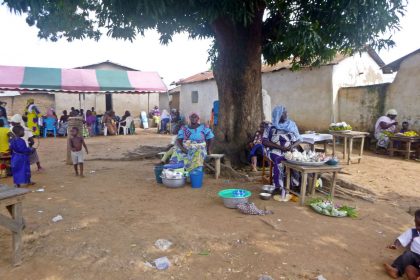 Location
Location
KriKri, Centrale Region, Togo
Community Description
KriKri is in the same general location as the Affem Kabyé health clinic, to the north of the town of Tchamba and near the Benin border. The population of KriKri is around 4,000 inhabitants, mostly cultivators farming the common regional crops of maize, soy, beans, manioc and yams. A small cashew nut cash crop cultivation exists as an agroforestry crop within household plots. Processing plants are accessible as the region of Tchamba, in general, is a major exporter of cashew nut.
The majority of the population are of the Tchamba (or Tem) ethnic group, with Molla and sedentary Fulani. While animism was the dominant religion at the time of settlement, today most inhabitants are Muslim.
Water scarcity is widespread. While there is a municipal water tower in KriKri, the distribution is inadequate to supply the needs of the entire village. Other community wells exist. However, most of those dry up during the dry season. Several international and national NGOs have worked and continue to work in KriKri in areas of family planning, trafficking awareness and prevention, and youth development.
The health clinic in KriKri serves a larger population of 6,200 including outlying villages. The clinic was built in 1988 initially by the community and later, in 2013, a larger maternity clinic was built with the assistance of a Togolese NGO with international funds. The clinic is powered by electricity and has indoor plumbing fixtures. The clinic commonly treats cases of malaria, gastro-intestinal ailments (particularly in children), and dermatological problems by those inhabitants living next to the region’s rivers. Clinic births average seventeen a month. The initial water source at the clinic was a shallow, open 8-meter well, later in 1983 the well was covered, and a metal water tower, polyethylene tank, and hand pump installed.
Problem Addressed
The water source at the clinic ceased being potable shortly after the clinic was first built due to lateral contamination of the well water from nearby open sources, and infiltration of pesticide and fertilizers from area fields. The clinic well, as in most of the region, runs dry from February to the start of the rainy season in May or June. While the well water continued to be used (until 2012 when the old metal pipes began rusting) for cleaning, potable water was and continues to be brought to the clinic from village wells, and typically by the patients themselves. The lack of water at the clinic is particularly onerous for women giving birth. The relatives of patients are required to haul water during and post-birth for cleaning of the maternity room, utensils, and birthing cloth. Potable water for staff and patients is brought to the clinic from a closed well 3 km away in plastic containers and treated with bleach. The water used for cleaning surfaces post-treatment is typically not treated with bleach. The filtering of sediment is not done.
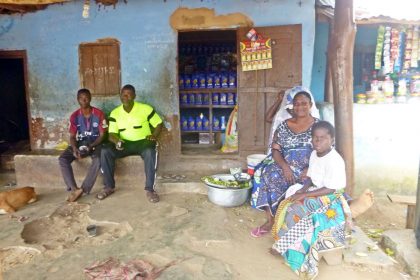 Project Description
Project Description
This project is to build a borehole well for the clinic. Under the guidance of the Department of Hydraulics and Sanitation’s regional office in Sokode and with support from the Ministry of Health regional director, who identified clinics with the most critical need, and a local drilling company, this project proposes to drill a 60- to 100-meter borehole well at the clinic, equipped with the following:
• An electric submersible pump,
• a 4.5-meter high cement block water tower,
• a 2 meter3 polyethylene tank
• piping to the main intake valve at the clinic.
The submersible pump will be run using electricity. The local drilling company selected, Plomberie Génerale de Réalisation de Forage, in operation since 1998 and based in Tchamba, has extensive experience drilling deep borehole wells throughout Togo and regionally in Burkina Faso, Benin, and Nigeria.
Project Impact
Number of people affected by the project: 6,200
Project Administration
This project will be managed by Anne Jeton, hydrologist and Returned Peace Corps Volunteer (RPCV), Burkina Faso (’82-’85) and Returned Peace Corps Response Volunteer (RPCRV), Togo (’16 -’17).
Anne was sent to Togo on behalf of Water Charity to develop and administer new projects, and to coordinate with the Peace Corps.
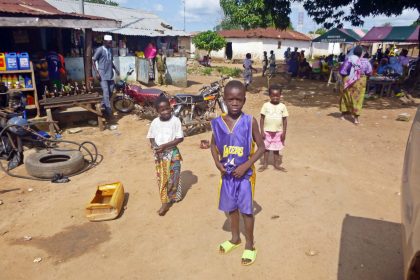 Monitoring and Maintenance
Monitoring and Maintenance
Along with staff from the Department of Hydraulics and Sanitation who will monitor the well “indefinitely” (the well data becomes part of the official borehole well database, and as such is included in periodic field monitoring by technicians based in each Prefecture ), the contract for well drilling states a one-year guarantee provided by the drilling company. Problems with pump and borehole functioning are typically resolved in the first month of use.
Proper screening of the borehole and submersible pump placement relative to the static water table often mitigates the most common problems. However, any mechanical problems surfacing in the first year will be the responsibility of the drilling company.
The clinic staff will be responsible for maintaining a well repair account which will be funded from the sale of medicines. The clinic will decide a nominal fee for water use should the water account be insufficient, or the community will be asked to contribute directly to the costs.
Project Funding
This project has been funded by an anonymous donor.
Conclusion of KriKri Clinic Borehole System Project – Togo
Conclusion: This project was managed by Anne Jeton, hydrologist and Returned Peace Corps Volunteer (RPCV), Burkina Faso (’82-’85) and Returned Peace Corps Response Volunteer (RPCRV), Togo (’16 -’17).
Project Name: KriKri Health Clinic Borehole Well Water System, Centrale Region, Togo
T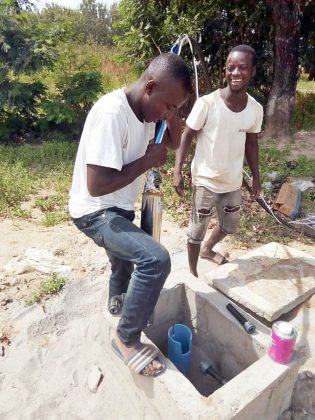 he purpose of the borehole water system project at the KriKri health clinic was to address a lack of both potable and year-round water, either the absence of or nonfunctioning indoor plumbing and the lack of hygienic disposal of afterbirth blood and tissue.
he purpose of the borehole water system project at the KriKri health clinic was to address a lack of both potable and year-round water, either the absence of or nonfunctioning indoor plumbing and the lack of hygienic disposal of afterbirth blood and tissue.
The maternity delivery room was equipped with a sink, faucet and running, potable water, and through additional outside funding; a floor drain and a discharge chamber, both plumbed to a dedicated subsurface cement-lined and ventilated septic tank. Delivery room waste (blood and tissue) can now be dispensed with directly in the maternity room in a safe and hygienic manner, rather than hand-carried by the midwives to an outdoor pit or in many cases poured into the latrines.
The KriKri Clinic borehole was drilled to a depth of 55 meters and yields 2,200 liters/hour. Following borehole drilling, a “pump test” was run to determine the well’s productivity and in turn the hydraulic properties of the aquifer. The pump was run for several hours at a rate like actual use conditions and the declining water table (drawdown) was measured at regular intervals. Simply put, the hydraulic conditions of the well are favorable to insure a sustainable water supply for many years to come (assuming the system is well maintained).
Water samples from both the borehole well and the original clinic well were taken and sent to the Regional laboratory in Sokodé, the regional capital, for a complete microbial and an inorganic compound analysis. The results of this analysis indicate zero presence of any of the disease-causing bacteria tested (E Coli, Salmonella, Fecal Streptococci, Enterococci and a general category of thermotolerant Coliforms) in the new borehole well.
An official technical opening concluded the project with a presentation by the driller on the borehole well components, brief discourses by the Department of Hydraulics Regional Director, village leaders, the Water Charity coordinator, and a representative from the regional ministry of health. As the representative for Water Charity and its donor(s), the Coordinator reinforced previously discussed themes of maintenance and upkeep through the active participation of a community water committee and a clinic repair account, to manage public access to the well in a non-disruptive manner to the clinic staff and patients, and most importantly to take responsible ownership of this valuable resource.
CONCLUSION AND IMPACT: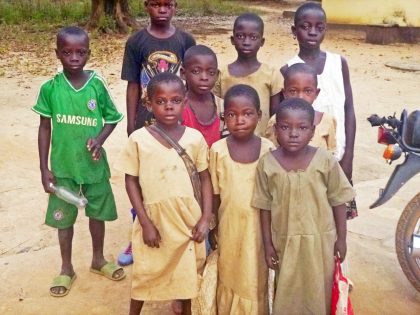
The KriKri clinic serves a population of approximately 6,200 people, including the neighboring villages, who will directly benefit from a more hygienic health clinic. While clearly not all 4,000 inhabitants living in KriKri will be accessing the well water for personal consumption, the community development liaison estimated perhaps as many as 1,500 inhabitants may utilize the well.
The clinic anticipates seeing a rise in births as there is now running water and female relatives are no longer obliged to fetch water for the patient, in addition to an overall improvement in hygiene. The clinic staff will use access to potable water to encourage better overall hygiene, as most of the disease-causing bacteria in the community water sources are due to fecal transmission by both animals and humans. The clinic staff will be better protected against blood-borne diseases as afterbirth material (blood and tissue) will be disposed of in a rapid and efficient manner, significantly reducing exposure.